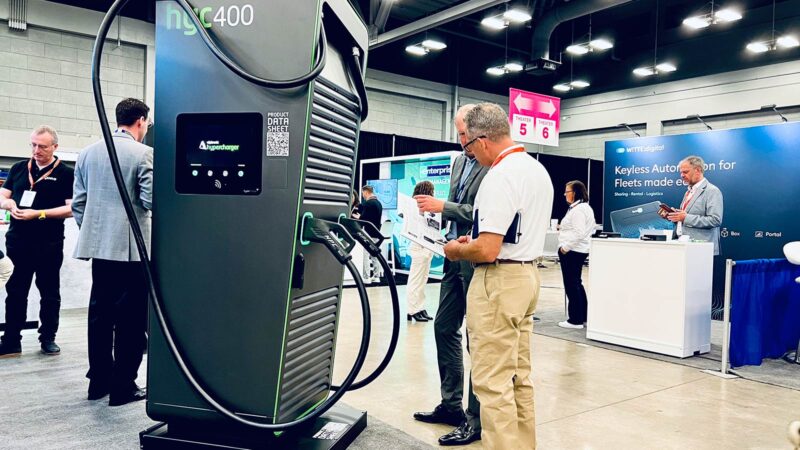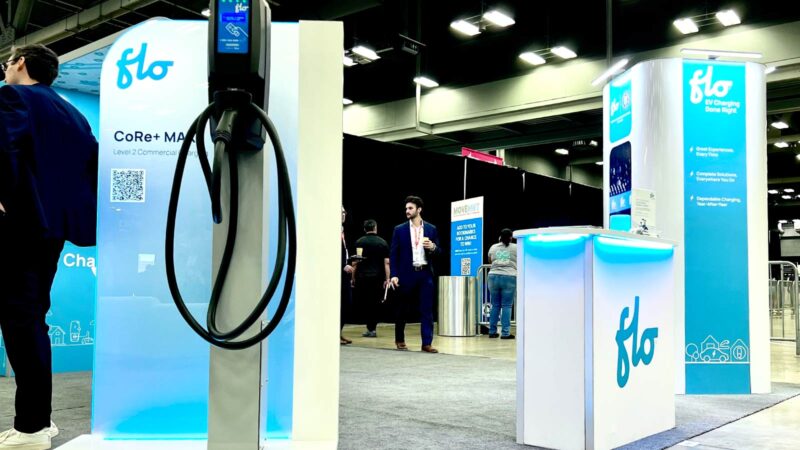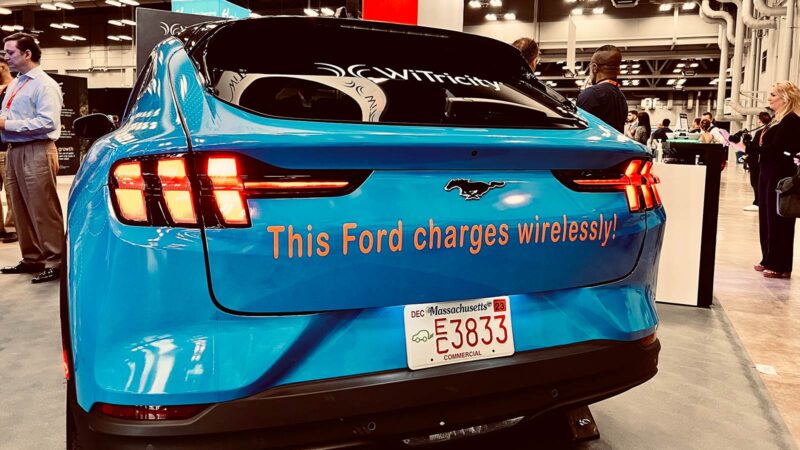The silicon sprawling city of Austin recently hosted the MOVE America tech mobility and start-up conference. This event assembles vendors, start-ups, and companies alike to showcase their ideas and products for the highly competitive field of electric mobility.
Armed with a paper notepad and clicky pen, I used my media pass to chat with engineers and PR representatives to understand what’s coming down the silicon grapevine when it comes to electric transportation.

After a full day of shaking hands and asking, “How does it work?” of various professionals, I noticed a clear and defined theme – convenience. Convenience is the new black when talking about electrified mobility. Many companies at the event showed solutions for the near future that instilled optimism in tomorrow’s potential.
With the electric vehicle market growing like weeds after a rainstorm, the common issue is figuring out how and where to keep them charged. Several charging station companies were there showcasing their latest Level 1,2 and 3 chargers.
After a full day of shaking hands and asking, “How does it work?” of various professionals, I noticed a clear and defined theme – convenience.
For a brief explanation, a Level 1 charger is a slower, standard plug-in used for at-home charging. A Level 1 charger can take hours to top off a half-depleted EV battery. Level 2 chargers, which you typically see in public parking lots for EV owners to top off while they shop, feed the battery a bit faster but can still take about four hours to charge to 80%. A Level 3, or DC fast charger, can get you to that level in less than an hour. They are the biggest, rivaling the size of gasoline pumps with a more futuristic or authoritarian aesthetic, depending on how to view things.
FLO EV Charging
FLO has been addressing the issues with EV charging on all fronts. Its company ideology for building chargers starts with the basics. Make it work, make it reliable, and then focus on making it as convenient as possible. For example, one of the common issues with public chargers is arriving only to find out it’s been vandalized or out of order. FLO maintains its growing network of public chargers in New York City with a full-time maintenance crew whose only job is ensuring all company chargers are in working order.

Natan Yang, FLO’s chief product officer, showed me the design of its latest Level 3 charger. What stands out is the size. These chargers stand five feet tall and boast LED lighting, are pre-wired for video and audio surveillance, and provide a mechanical mechanism to make lifting the often-heavy charging handle easier. FLO’s market research showed that people felt unsafe charging at night because these massive level 3 chargers can make it easy for someone to hide behind or lurk in its shadow.
Making chargers shorter makes them appear more welcoming and accessible for maintenance. FLO does not have any chargers in Texas, and when asked what the leading factor in advancing the electric charging infrastructure here was, the answer, regrettably, lay in the slow grind of bureaucracy at the city, state, and national levels.
Mercedes Pay USA for Me Connect Profile
Companies tied to OEMs like Mercedes Pay USA aim to turn your vehicle into a trusted device. Late model Mercedes-Benz vehicles allow customers to create a “me connect” profile. Like using an OEM app, this profile stores personal preferences and settings. Mercedes Pay USA is launching a new feature to help drivers find a parking spot and pay for it without ever touching an app on their phones.
Mercedes Pay USA is launching a new feature to help drivers find a parking spot and pay for it without ever touching an app on their phones.
Owners can store their banking information in their me-connect profile, as with their personal laptop or smartphone, to make digital purchases seamless. Moreover, Mercedes Pay USA is PCI certified, meaning it is licensed to collect and secure sensitive material like credit card information. The product will be added to a long list of standard Mercedes-Benz features.
WiTricity Wireless EV Charging
One of the most eye-opening technologies on display was the WiTricity wireless EV charger. This product functions similarly to a wireless charging pad for your phone. It’s a large pad placed on the ground that activates when an EV drives over it in a parking space. Showcasing the product was a retrofitted Ford Mustang Mach 3 with WiTricity’s resistor. The hope is that this will become a factory option for OEMs to include as a “tech package” for customers.

WiTricity is working with companies to provide wireless charging pads as they switch to electrifying their vehicle fleet. The potential and straightforward delivery of this device is what caught my attention. The resistor is about the size of a medium pizza box. Imagine a future where an entire row of parking spaces with wireless charging pads allows EVs to park and charge without fussing with cumbersome charging cables.
CarValoo AI Fleet Management
While on the topic of fleets, CarValoo is an AI company aimed at taking the stress out of fleet management. Using a sensor box the size of a wristwatch, CarValoo provides users with real-life 360 data analysis. If a vehicle strays from the routine, meaning if it’s involved in a scenario where the vehicle is damaged, the CarValoo AI sensor instantly records it.

Moreover, this service does not track a vehicle’s location. It only records a time stamp when damage is alerted. CarValoo does not hold any information on the driver or vehicle itself. It’s merely a tool to help maintain transparency in fleet management by removing doubt from the equation. CarValoo was established in Europe and is available in the United States as of 2023.
Beep Autonomous Ride Sharing
One company actively working to reduce congestion in urban areas is Beep. A Florida-based shared mobility network using Level 3 autonomous vans that can shuttle people around a circuit route. These electric vans are autonomous 95 percent of the time, with someone at the controls in case there’s an obstacle blocking its mapped path.
Beep representatives mentioned that Level 4 autonomy-capable Beep vans, designed by Pinnifarina, are coming in 2025, which won’t require a physical person at the controls and reach speeds of 25 mph. It’s easy to imagine the benefit of having a few of these compact self-driving vans shuffling people from one block to another in a downtown district, reducing the number of cluttering cars.
These electric vans are autonomous 95 percent of the time, with someone at the controls in case there’s an obstacle blocking its mapped path.
With companies like these already making headway in the transportation industry, one can only ponder how radically different the urban landscape will look in two to three years, especially in Texas, where progress in electric mobility is more tortoise than hare – unless you live in Austin.

